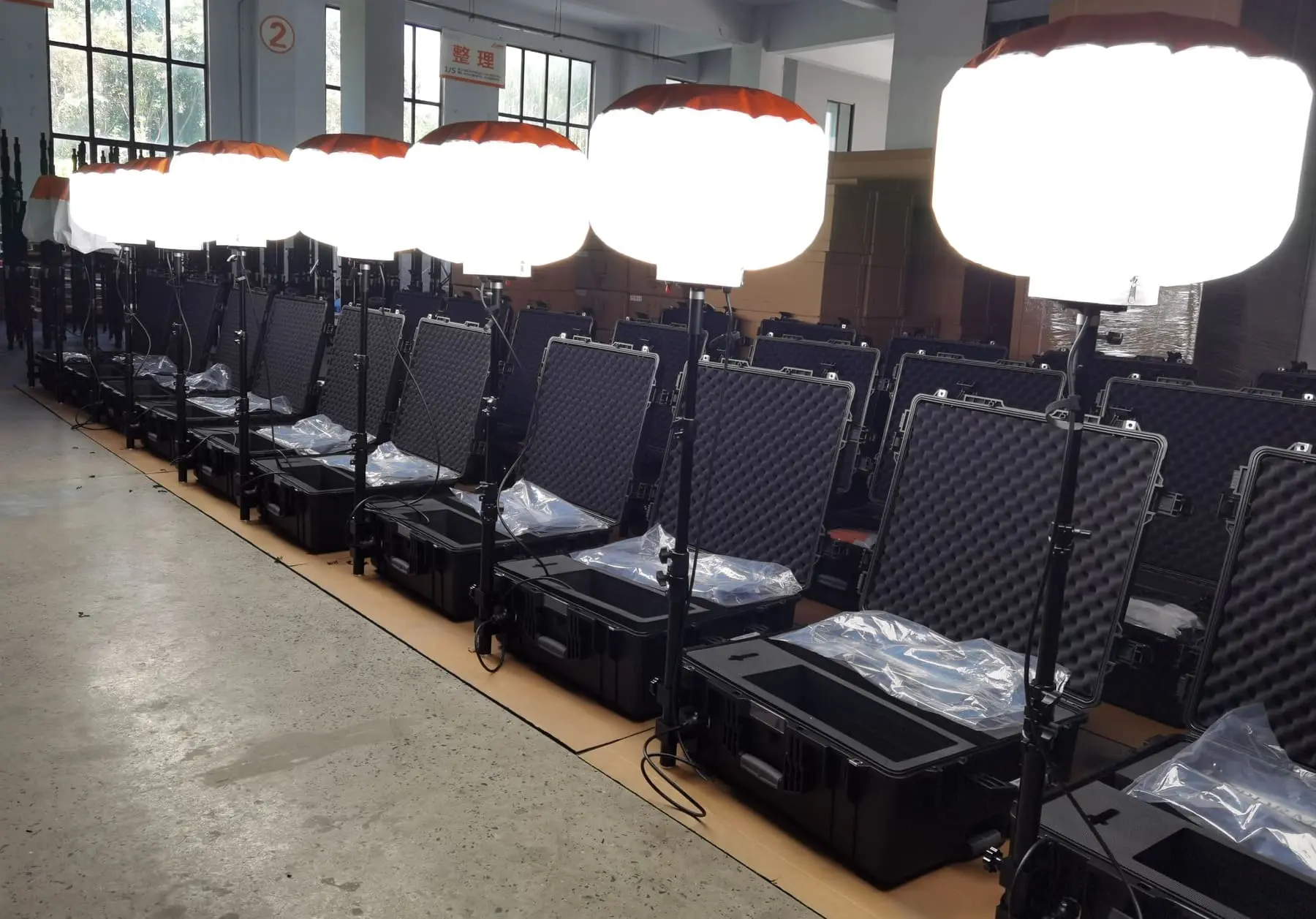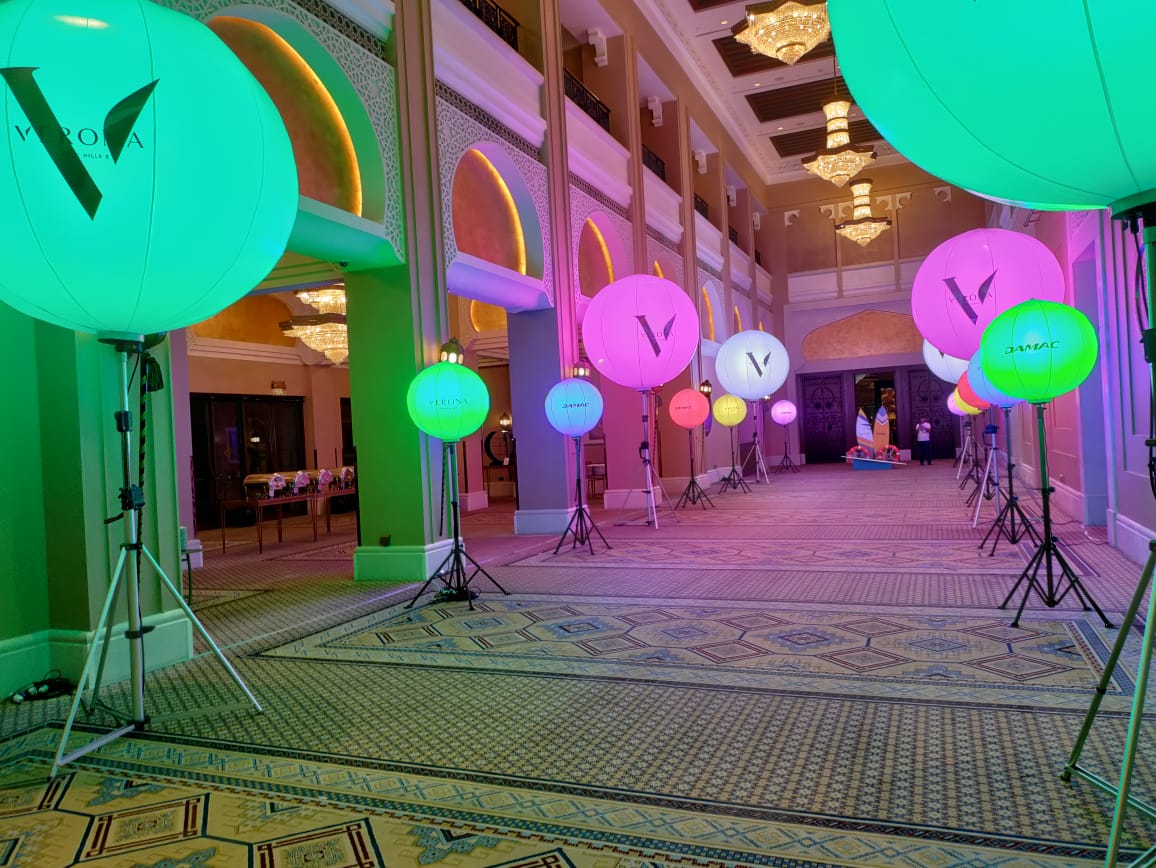Balloon lights are more than just bright—they create mood, visibility, and atmosphere. But should you go with a single-color light or invest in a multi-color RGBW system?
Single-color balloon lights1 offer consistent, glare-free brightness for industrial use, while multi-color lights (like RGBW) bring flexibility, ambiance, and creative control for events and film sets.

I first used a single-color light from Airstar’s Sirocco line on a highway site. It was reliable, white, and powerful—perfect for safety and visibility. A month later, I helped light a fashion show using a Moonlightia RGBW balloon tower. With color mixing and remote control, the space shifted from warm gold to icy blue in seconds. That contrast showed me how different these two styles really are.
What Are the Benefits of Single-Color Balloon Lights?
Single-color lights use one fixed color temperature—usually warm white (3000K), neutral (4000K), or cool white (5000K–6000K).
Single-color balloon lights are ideal for construction, emergency response, and any job that needs strong, consistent, glare-free lighting.

When you’re lighting a tunnel or road at night, color control doesn’t matter—clarity does. That’s why single-color lights from Airstar or Moonlightia are perfect. They deliver even 360° lighting with no shadows or flicker.
I’ve deployed dozens of these on job sites. Their simplicity means fewer controls, fewer issues. Workers can see clearly. Safety officers approve the glare-free beam. And battery life lasts longer because there’s no color mixing chip.
Key pros of single-color lights:
| Feature | Benefit |
|---|---|
| High Lumens per Watt | More brightness, less power |
| Simplicity | Easy to use, no setup complexity |
| Durability | Fewer components = fewer failures |
| Cost | Lower than RGB models |
| Use Cases | Roadworks, rescue, utility work |
On a bridge repair job last year, we used two 500W Moonlightia white balloon lights. No glare. No overheating. Just clean, strong light that lasted the whole shift.
What Advantages Do Multi-Color Balloon Lights Offer?
Multi-color balloon lights2 use RGBW or RGBA LEDs that blend to create millions of colors—including custom tones like soft amber, deep violet, or warm daylight.
Multi-color balloon lights give creative teams full control of atmosphere, mood, and show transitions—perfect for events, film, and live shows.

I once lit a stage for a music festival using Airstar’s Crystal RGBW balloons. We started with warm orange for sunset, then moved to purple and pink for the main set. Each color matched the beat. The crowd noticed. So did the client.
RGBW towers also work with DMX control or Bluetooth apps. That means light cues can sync with sound, camera, or performer motion. Moonlightia’s multi-color towers support wireless color changes, dimming, and pre-set color programs.
Here’s why RGBW balloon lights stand out:
| Feature | Benefit |
|---|---|
| Custom Color Control | Full RGBW spectrum |
| App/DMX Compatibility | Sync with show or video cues |
| Versatility | Use same light for multiple moods |
| Visual Appeal | Eye-catching, immersive |
| Use Cases | Concerts, weddings, fashion, film |
At a beach wedding, we used one RGBW tower to light the altar in warm white. After dinner, we turned it ocean blue to light the dance floor. One light. Two atmospheres. That flexibility can’t be beat.
What Are the Downsides of Each Type?
No light is perfect. The more control you add, the more complexity follows.
Single-color lights are limited in effect. RGB lights are versatile but cost more and need more setup.

During one product launch, a team chose RGB lights but didn’t test their DMX controller. On the day, the app didn’t pair. The backup was a single-color light. It worked. But the scene lacked drama.
Common trade-offs:
| Factor | Single-Color Light | Multi-Color Light (RGBW) |
|---|---|---|
| Cost | Lower | Higher |
| Setup Time | Fast | Slower (requires programming) |
| Power Draw | Lower | Higher |
| Visual Range | Fixed white | Full color spectrum |
| Maintenance | Simple | More electronics = more care |
If you just need reliable, bright light—go single-color. If your space is part of the show, RGBW is worth it.
Who Should Choose What?
It depends on your audience, venue, and goal.
Go with single-color lights for work, safety, and basic setups. Choose RGBW lights3 when your lighting design is part of the experience.

Here’s a quick guide:
| Industry / Use Case | Recommended Light Type |
|---|---|
| Road Construction | Single-color (5000K) |
| Emergency Response | Single-color (4000K) |
| Film Production (Night) | RGBW (tunable white + color) |
| Outdoor Festival | RGBW |
| Corporate Event | RGBW |
| Utility Maintenance | Single-color |
Brands like Airstar dominate in both categories—offering strong white lights for safety and show-quality RGBW models for luxury events. At Moonlightia, we do both too—but we also focus on energy savings, compact gear, and full mobile control across all lines.
Conclusion
Single-color balloon lights give you strong, consistent light for work. Multi-color RGBW lights add visual drama for shows and stories. Choose based on your scene, not just your space.
-
Explore the advantages of single-color balloon lights for reliable and glare-free illumination in various settings. ↩
-
Discover how multi-color balloon lights can enhance events with creative control and vibrant atmospheres. ↩
-
Learn about RGBW lights and their capabilities for creating dynamic lighting experiences in entertainment and events. ↩




